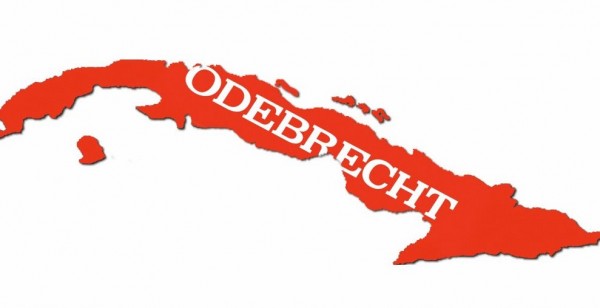
A tale of two airports
MIAMI – An all-star team of environmental groups, headed by the Natural Resources Defense Council, the Sierra Club, the World Wildlife Fund, the National Audubon Society, the National Parks and Conservation Association, the Florida Wildlife Federation, and Friends of the Everglades are adamantly opposed to an airport project planned on 1,632 acres of land that sit between two national parks in the southern end of Miami-Dade County. Based on that information alone you’d probably deduce that the project would not stand a chance.
You’d be wrong.
It happened in the 1990s with the Homestead Air Base Developers, Inc. (HABDI) project. HABDI was born miraculously receiving an overnight, non-bid contract from Miami-Dade county commissioners in a 9-4 vote. A vote taken in spite of the fact commissioners had not studied, or even considered, other proposals for the land. The plan was to privately develop the Homestead Air Force Base, which had been destroyed by Hurricane Andrew in 1992, into a general-purpose airport. It would have included hotels, office complexes, and retail shopping centers.

The reasoning against the HABDI project was made perfectly clear by Alan Farago, Miami Sierra Conservation chairman at the time, who wrote: “The possible construction of a billion dollar polluting airport” adjacent to environmentally sensitive parks was “intolerable.”
The Miami Herald and other Florida newspapers, and the New York Times, raised a ruckus over the possible construction of a commercial airport between America’s most threatened national parks. Still a HABDI lobbyist had the temerity to suggest that the real problem was that “the national parks are situated too close to population centers.”
Fast forward to 2014.
A company won a hard-fought bidding process to build a $512 million development called Airport City at Miami International Airport (MIA). The plan calls for construction of a “futuristic” project where “newly arrived visitors check in at a four-star hotel to relax [by the] pool, and corporate executives hop onto a people mover to meet at a business center minutes away…”
Taxpayers would not pay one cent of the half-billion dollar tab. The developer would recoup its investment by running the new facilities for half a century – while paying rent and a percentage of revenues to the county. Projections call for the county to make half a billion dollars over the 50-year deal.
Not bad. In fact, you’re probably nodding your head and thinking, “But of course, let’s do it!”
And you’d also be wrong. Because there’s a catch… The developer happens to be Odebrecht USA, an affiliate of its Brazilian parent company that works in Cuba – responsible for developing the new Port of Mariel and its adjacent Economic Development Zone, about 25 miles west of Havana.
Soon after Odebrecht received the winning nod to build Airport City several Cuban American county commissioners became aware of its ties to the Brazilian group doing business in Cuba. That’s when the stalling began. All sort of nonsensical reasons were tossed in the air to delay the building of the project. Along the way the 33-acre project was also reduced to nine acres. Odebrecht USA did not flinch – they agreed to the smaller plan.
Eight years later, Airport City may be on its last legs – ready to “fall apart,” as described by the Miami Herald recently. Between a Cuban American mayor, two persistent Cuban American county commissioners, and a Cuban American who runs MIA for the county, Odebrecht may have had enough.
In early July a Miami Herald article stated, “contractor Odebrecht USA indicated earlier this week that it may sue the county, which owns MIA, for failing to bring to a vote Airport City project agreements that have been repeatedly revised at the urging of aviation administrators under pressure from some local politicians.

“In light of the fact that Odebrecht has expended millions of dollars pursuing Airport City and the continually changing and oddly timed articulated reasons for not moving the Project forward, Odebrecht may seek the reimbursement of its costs and damages,” company chief executive Gilberto Neves wrote in a letter to Mayor Carlos Gimenez.
The Herald account states that “according to Neves, Odebrecht has spent more than $11 million on the project since Miami-Dade asked the construction industry in 2008 – in the throes of the economic recession – to come up with a public-private partnership to make money for the airport.”
The 1990s HABDI project also had Cuban Americans involved. The county mayor then was Alex Penelas, a staunch backer of the project. The HABDI group was led by influential, mostly Cuban American, members of the Latin Builders Association who were big donors to the campaigns of many sitting county commissioners of the time. Internal strife and an apparent lack of deep enough pockets drove HABDI, the corporation, to later sell a majority share of the company to the Mas Canosa family.
Thank God for the work of the environmental community who pushed and never gave up. They forced the federal government to step in against the HABDI project. Local politicians and the county commission – led by the Cuban Americans – went against community interest, environmentalists, major newspapers, and the federal government trying to ram through what would have been a multi-billion dollar giveaway – and disaster.
The MIA Airport City project today sits idly and undecided – for the whim of a handful of Cuban American politicians and county administrators who will not allow the project to happen. This Miami ‘Cuba disease’ we’ve been exposed to for the more than half a century may cost taxpayers more than 10 millions dollars with nothing to show for it.
And all because a few Cuban Americans are mad that a Brazilian company does business in Cuba.


